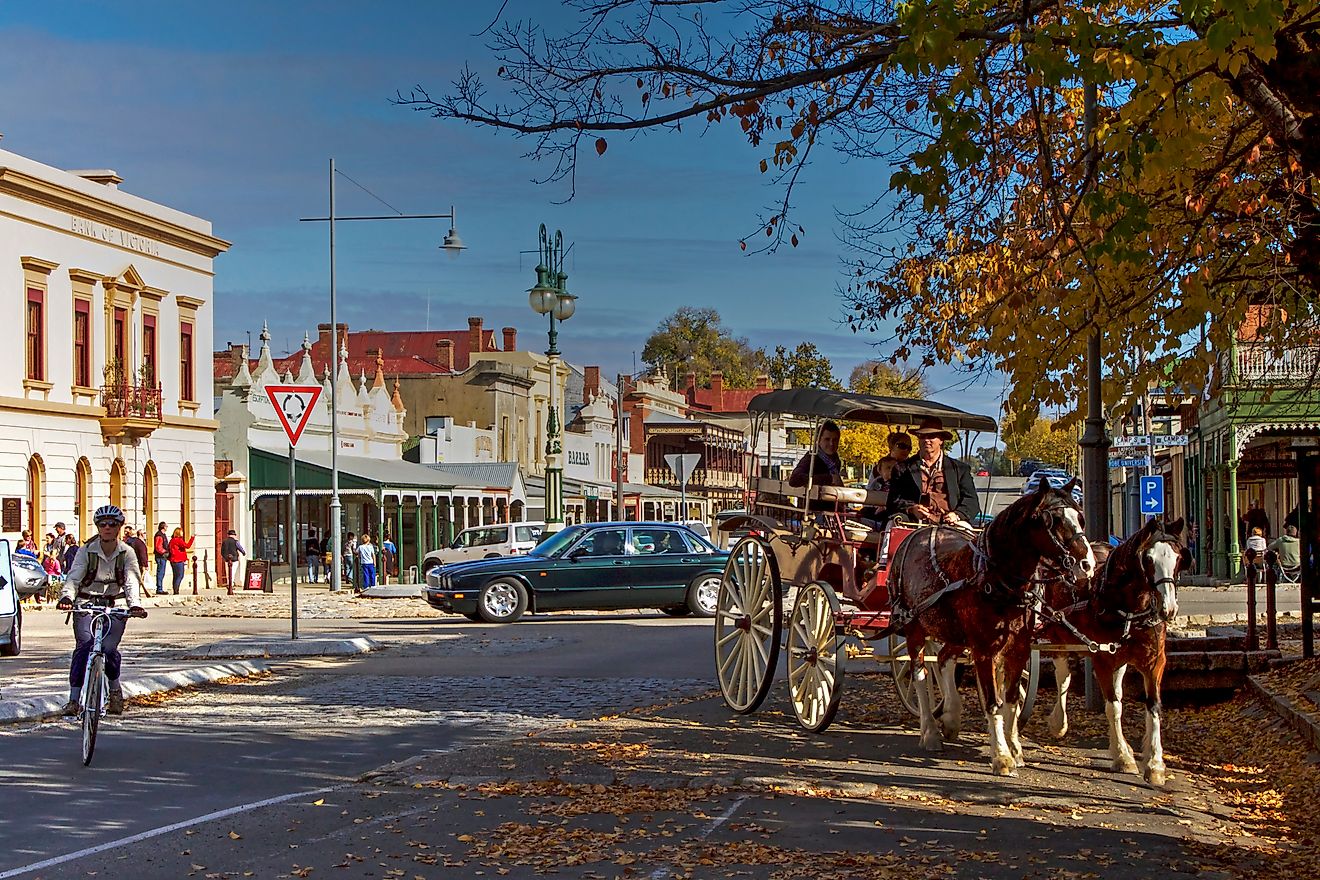Corcovado National Park
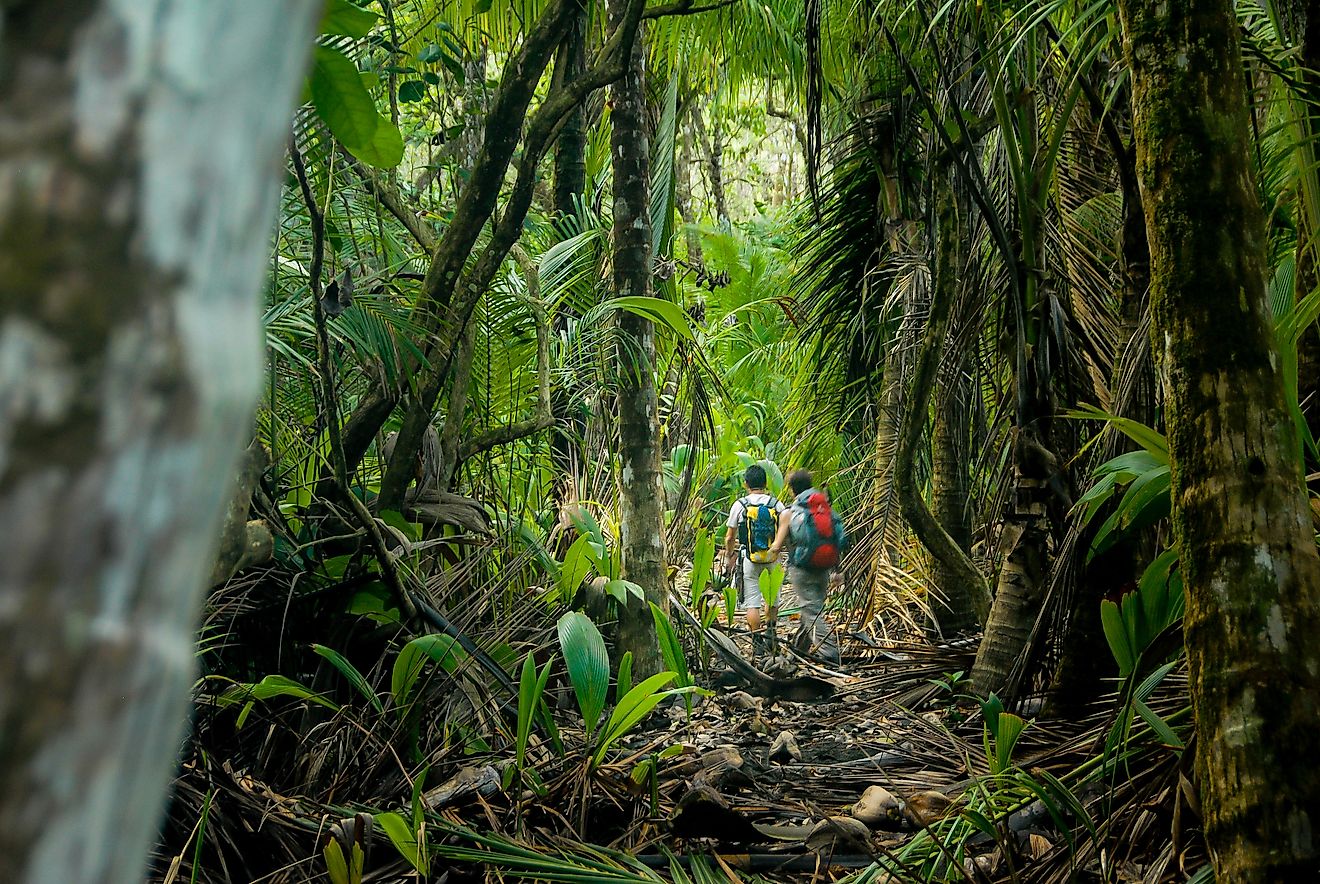
Corcovado National Park, or Parque Nacional Corcovado, in its native language, is located on the southwest tip of the Osa Peninsula, Puntarenas Province, Costa Rica. This conservation area is known for its high levels of biodiversity, and is one of the most diverse regions and ecosystems in the world. It is the largest park in Costa Rica, and unofficially regarded as its most stunning.
There are many hiking trails within the park which encourage respectful travellers and hikers to explore the natural rainforests, beaches, swamps and lowlands. Costa Rica has an extensive and active eco-tourism sector, and the park is a popular attraction for wildlife lovers and eco-friendly travellers. This park is also one of the most remote within Costa Rica, and requires quite a journey to get to. But the beauty of the area is only enhanced by its remoteness, as travellers can find themselves fully immersed in the lush landscape, and rich wildlife of the park.
Contents:
History
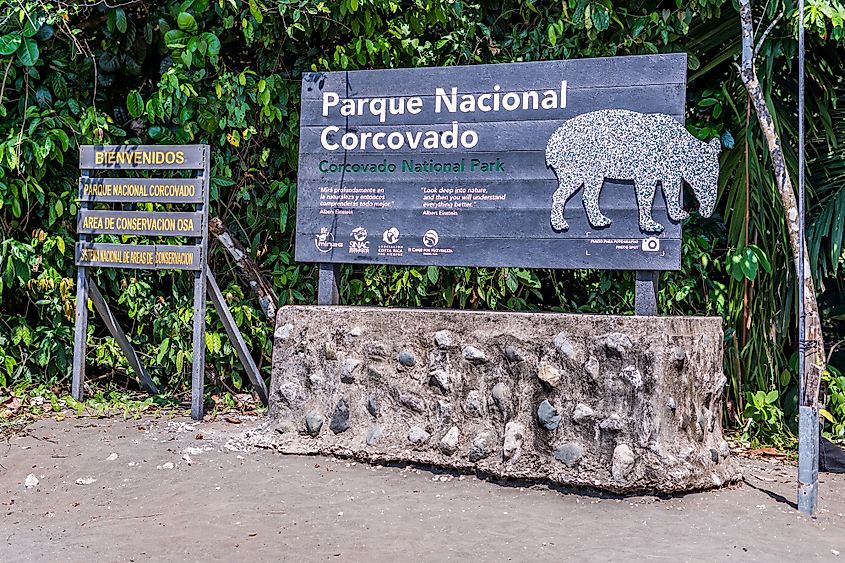
The park was established in 1975 and is governed by the National System of Conservation Areas (SINAC). The park itself includes roughly a third of the Osa Peninsula, an area that measures 424 square kilometres or 164 sq mi in size.
The area was previously popular for both gold mining and logging, with logging occurring primarily throughout much of the 1960s. This logging continued into the early 70s, and in 1975 plans had been made for a large-scale international logging company to reside in the area. This led scientists and local researchers to call for action, and the protection of the natural resources and wildlife that lived within the peninsula. Costa Rican president at the time, Daniel Oduber, responded by declaring the area a National Park, and therefore protected from any such logging activities.
Goldmining, which for many years had been a less invasive industry, continued within the park until 1986, when the sheer size and scale of the gold industry - and hunting that coincided with it - became too much of a risk for the wildlife within the conservation areas. The miners were then officially evicted, though it is known that illegal mining still occurs within the park, to a lesser scale.
Landscape And Geography
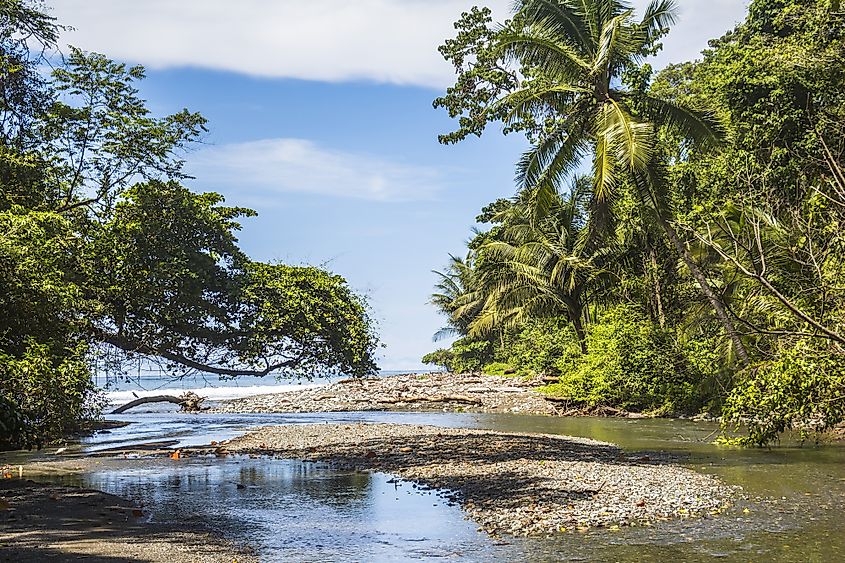
Corcovado National Park is located in the Osa Peninsula, which is on the western, or Pacific side of Costa Rica. This area includes the largest primary forest along the American Pacific coastline. It is also one of the largest and only lowland tropical forests in the world. A primary forest is simply an old-growth forest, or virgin forest, which mainly consists of extremely old vegetation.
The landscape of the park and conservation areas are extremely diverse, and house thirteen different major ecosystems. Along with the lowland forests and mangrove swamps, the park exhibits everything from lagoons to jolillo palm groves, cloud forests, montane forests, and freshwater herbaceous swamps.
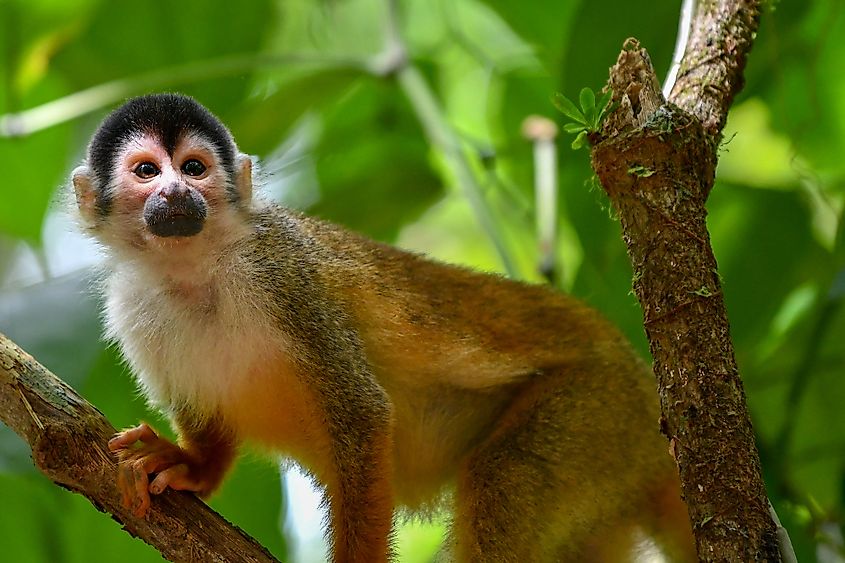
Increasing logging threats in the area threatened these towering old trees, and in turn the primary forest status of the Osa Peninsula throughout the 1960s and early 70s until the decision was made to render the area a protected park. Thankfully, large areas of original growth still remain, and the rich diversity of plants is evident within Corcovado.
Because the forest is also on a peninsula, it is one of the rare lowland tropical forests. Along the coastal areas, thick jungle-like rainforests give way to mangrove swamps and beaches, for a diversity of both plants and animals rarely seen anywhere else. Lush streams and rivers also flow down from higher elevations and waterfalls, carving their way out to sea. These estuaries and river mouths are full of marine and freshwater life, but can pose problems for hikers who have to ford them on their routes through the park.
Wildlife
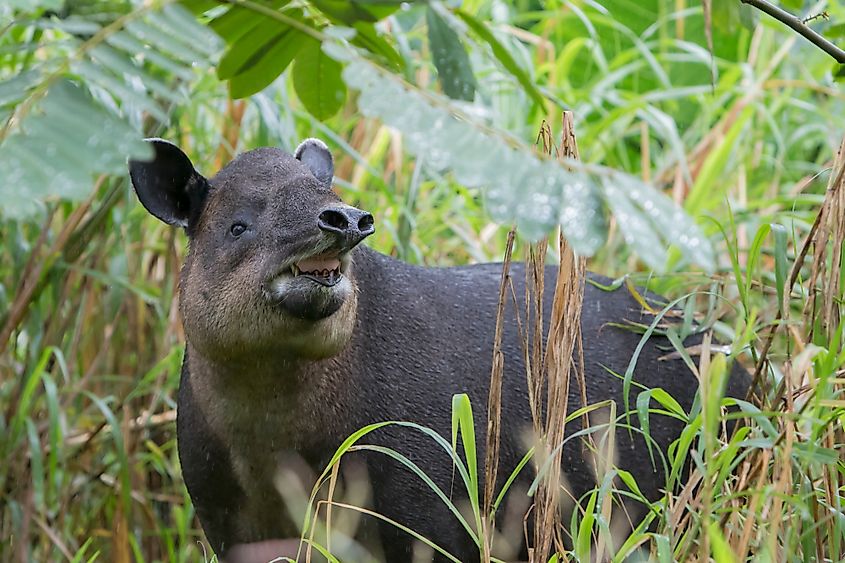
The Osa Peninsula is home to a wide variety of plants and animals and has been named one of the most biodiverse areas in the world. Along with the more than 500 different species of trees, the various ecosystems in the area form habitats for more than 400 bird species, 140 types of mammals, 116 amphibian and reptile species, and roughly 40 different fish. Many of these animals are threatened or even endangered animals, making the protection of this area all the more important.
One of the endangered mammals which reside in the area is the Baird’s tapir. These unique creatures have a sizable population within the protection of Corcovado National Park, and can be spotted by hikers and visitors to the area. These tapirs are the largest native mammal in both Southern and Central America, but have become endangered due to poaching and habitat loss.
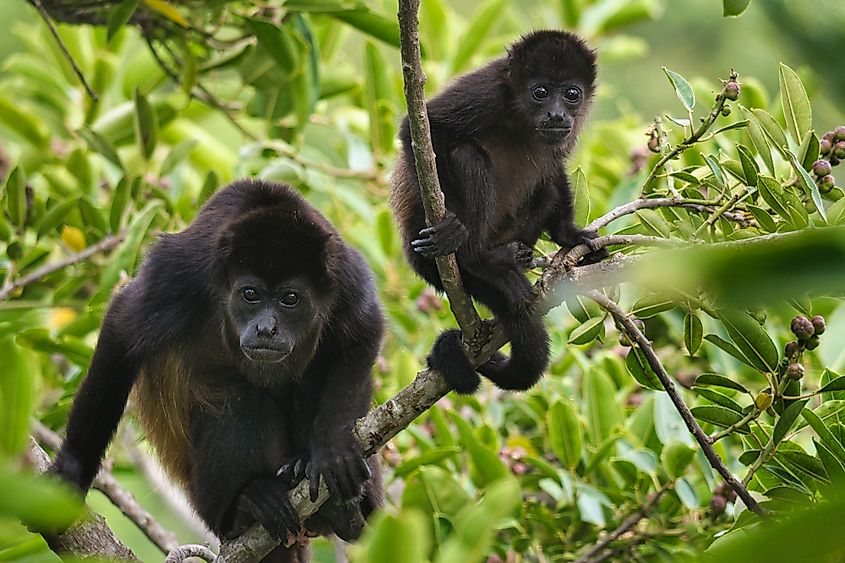
Another rare mammal which lives in the park is the Harbor Squirrel Monkey. The Squirrel monkey is the smallest monkey in Costa Rica, whose numbers have become threatened due to deforestation associated with the palm oil industry. The Osa Peninsula in general has the largest population of these monkeys in the country. The three other species of Costa Rican monkeys can also be spotted here, and they are: the white-faced capuchin, the mantled howler, and the Geoffroy’s spider monkey.
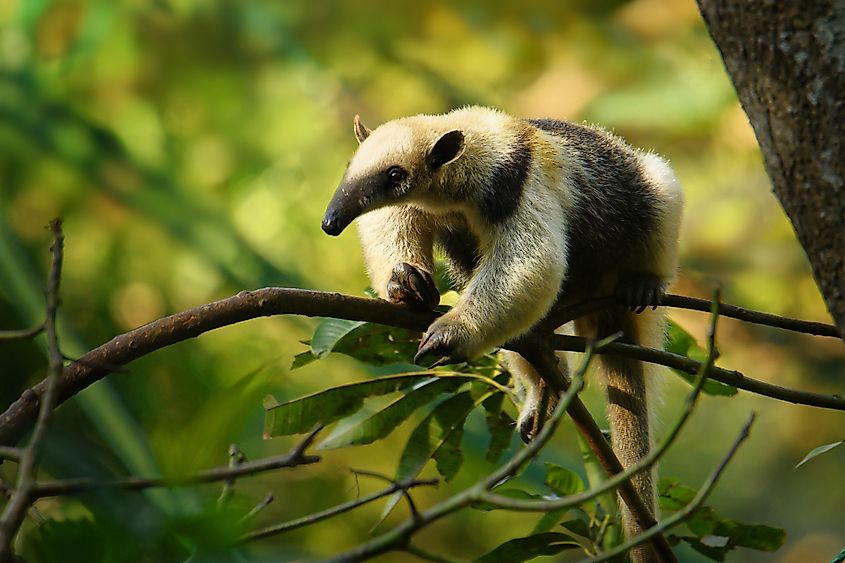
Anteaters and coatis also live in the area, and in fact, coatis are considered somewhat of a nuisance, much as raccoons are in urban areas of North America. It is nearly impossible to spend any time within the park without seeing a coati. Harder to spot are the more reclusive mammals, such as the two-toed and three-toed sloth, collared peccary and northern tamandua.
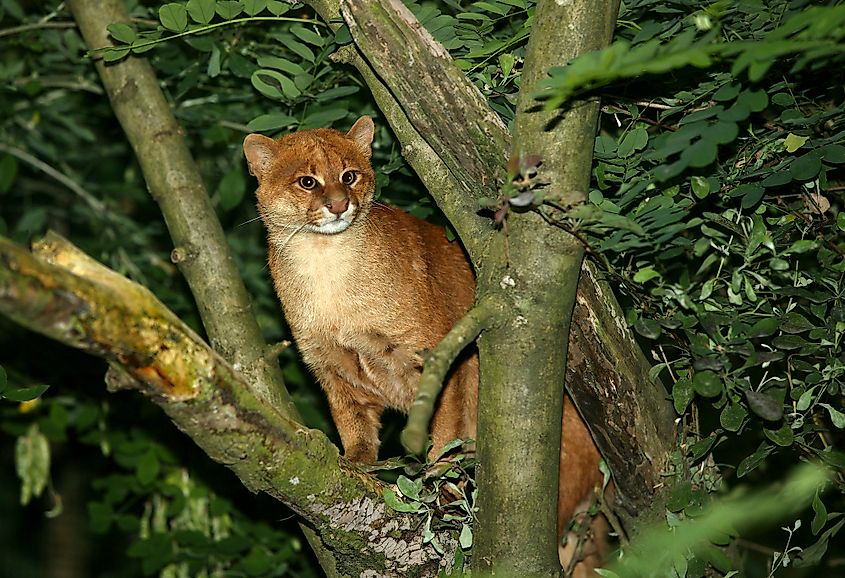
Another type of animal which may be harder to spot are the indigenous wild cats within the park. These include pumas, jaguars, ocelots, margays and jaguarundis. Jaguars in particular are a highly threatened species, and the park remains one of the few safe havens in which they can reside and be protected, though some illegal hunting still persists. These cats are also primarily nocturnal, meaning they are less likely to be spotted by passing hikers.
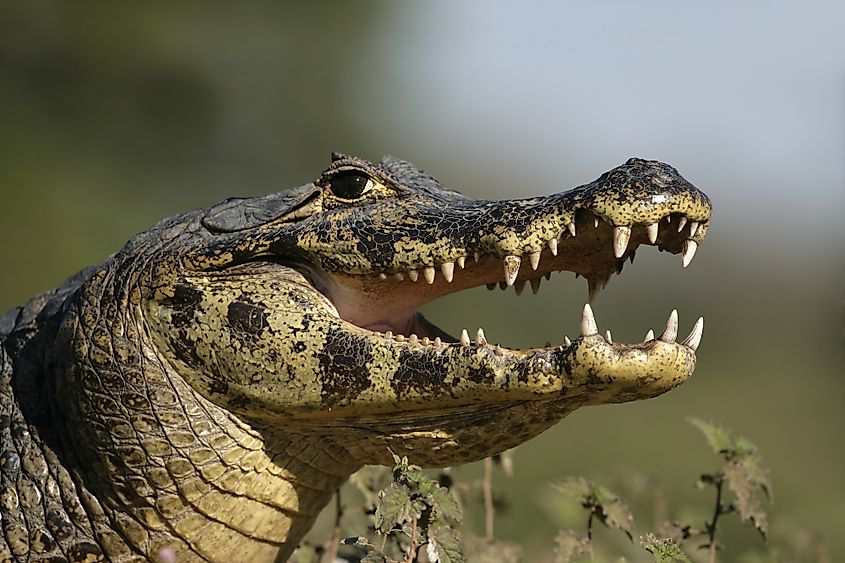
Along with the 40 or so different fish, the rivers and coasts within the park are home to some large marine and freshwater life. The Rio Sirena in particular is home to bull sharks, which swim upstream from the ocean, as well as both American crocodiles and spectacled caiman. Four different types of sea turtles, the Green, Pacific ridley, Hawksbill and Leatherback all nest along the Penisula’s shores.
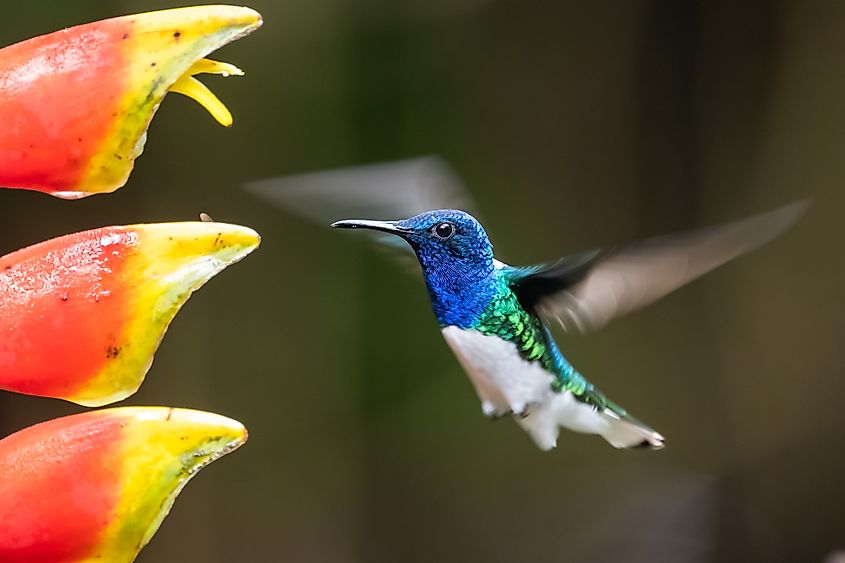
Even endangered birds flock to the park. The most notable is the Scarlet Macaw, which can often be seen flying overhead. Corcovado is home to the largest population of these gorgeous birds within Costa Rica. Another rare bird which calls the park home is the Harpy Eagle. This rare bird is one of the largest species of eagle in the world, and the biggest within its territory.
Other notable animals within the park are the vibrant poison dart frogs, fer-de-lance and bushmaster snakes, orb spiders and a wide variety of other insects and arachnids.
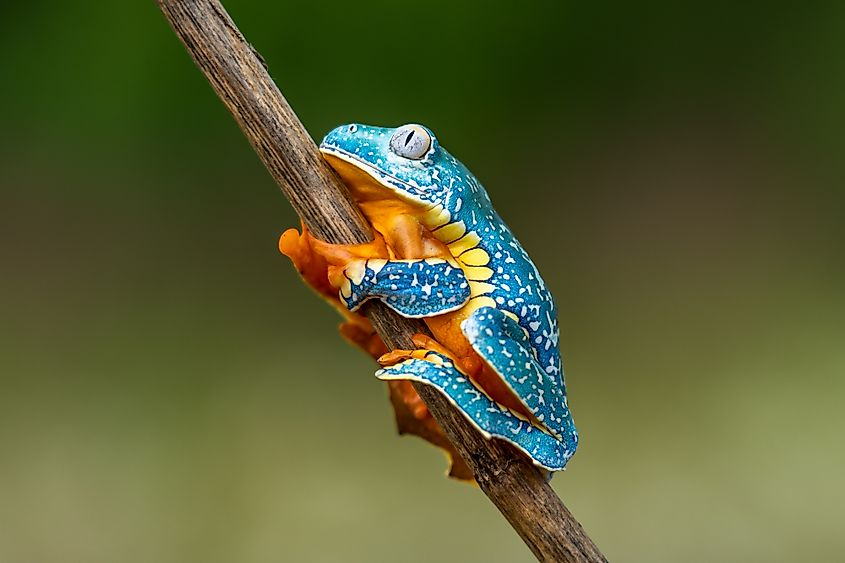
Full of lush greenery, tower ancient trees and various rare and amazing animals, the Corcovado National Park is a biodiversity dream, and a must see for any eco traveller or nature enthusiast.
Visiting Corcovado
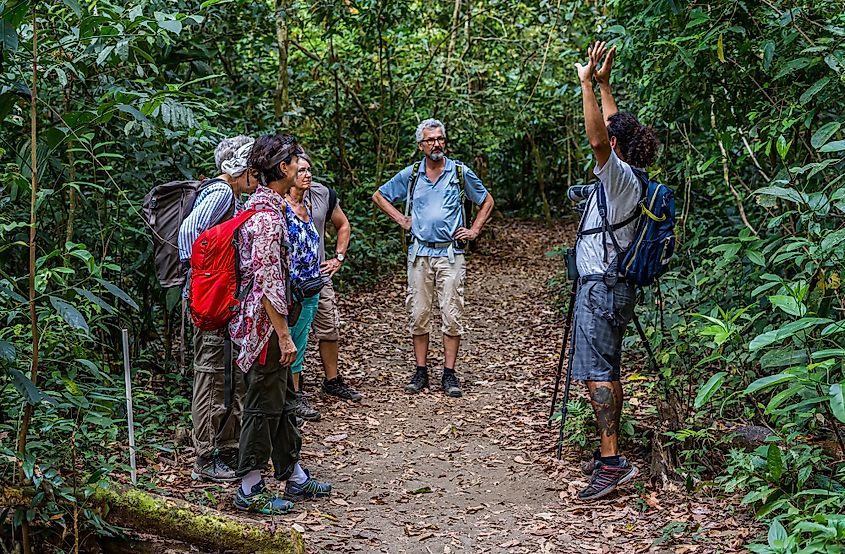
As a National Park, the area is open to the public, but does charge an entrance fee for non residents. Additionally, hikers must be accompanied by a certified park guide. This stipulation was put in place as ecotourism grew within the country, to ensure travellers and researchers alike were respecting the natural habitats and wildlife. Visitation is allowed on a day basis, as well as with overnight stays. Several lodging options from simple camping to cabins with bunks are available by reservation for those wishing to explore this lush land.
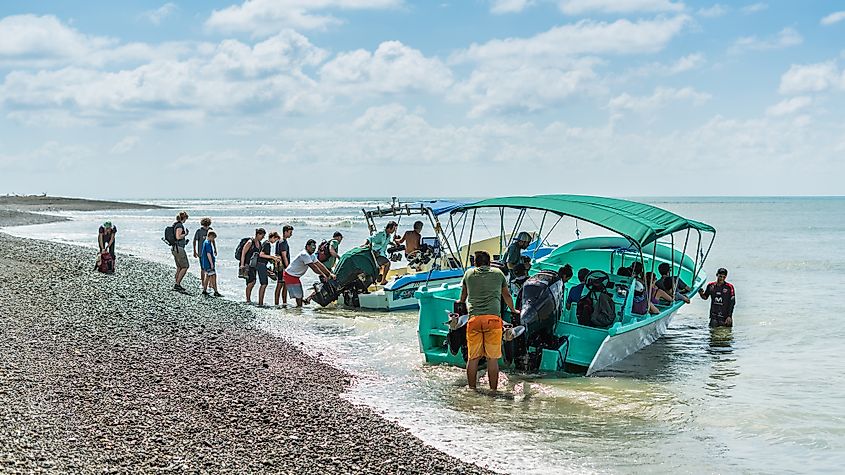
Hiking trails are extensive, and are generally considered of moderate difficulty. Pathways can, however, become flooded in the wet season meaning areas may be closed off, or require more extreme maneuvering to get around. Even in the drier seasons, river crossings are a necessity, and are another reason guided tours are enforced. To travel through the entire park, it generally takes an experienced hiker two or three days. There is also a day hike option, which is 5 miles (or 8 kilometers) long and generally takes about five or six hours to complete. This trail is known as Sendero El Tigre, and only opened in 2015, as an alternative to full day hiking. It has become one of the most popular experiences for visitors looking for a day adventure.






